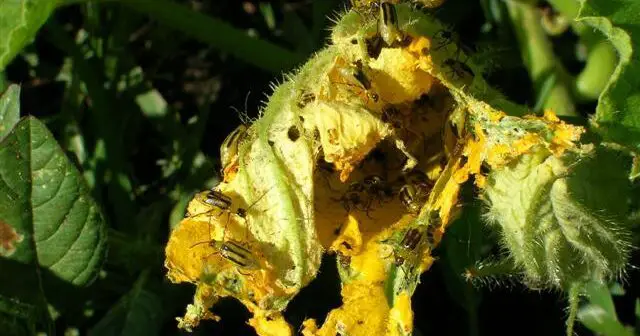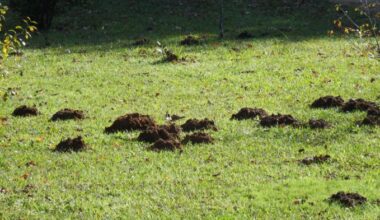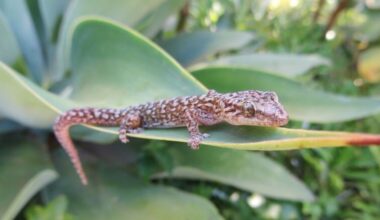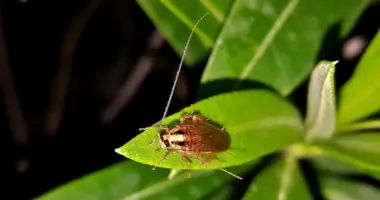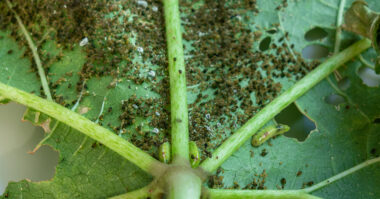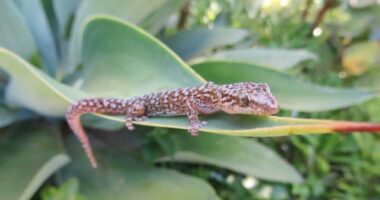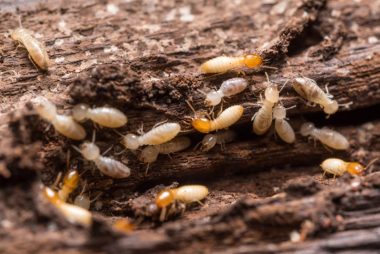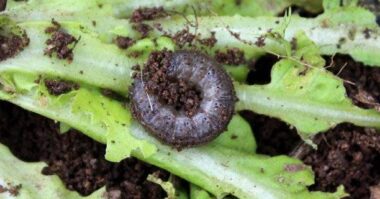The cucumber beetle feeds on the nectar of cucumber, squash and melon flowers. The larvae suck the sap from the plants. But the worst thing is the bacterial wilt carried by the beetles, which can wipe out an entire plant very quickly.
Hibernating individuals become active and move to intermediate host plants. Rosaceae are preferred plants on which the adults will feed before the first cucurbit seedlings arrive.
The use of an anti-insect net until flowering is a solution, however, we prefer more natural options, such as the following 3 plants to repel cucumber beetles:
- Chrysanthemum
- Tansy
- Absinthe
Contents
Why you should get rid of cucumber beetles
It is not so much the direct feeding damage of the striped cucumber beetle on the young seedlings that is most dreaded, but the transmission of the bacterium Erwinia tracheiphila, the agent responsible for bacterial wilt, by the beetle.
In fact, cucurbit seedlings can tolerate up to 50% defoliation caused by the feeding of the cucumber rootworm, with no impact on yield or quality. On the other hand, where the risk of bacterial wilt is high, depending on the history of the farm, one must intervene quickly, because it is at the cotyledon stage, up to the 5th true leaf stage, that the plant is most susceptible to bacterial wilt.
3 Plants that repel cucumber beetles
-
Chrysanthemums
Chrysanthemums are a natural repellent against many varieties of insect pests. The scent of chrysanthemums is known to repel cockroaches, ants, Japanese beetles, ticks, silverfish (Lepisma saccharina), lice, fleas, bedbugs, red spiders and galls nematodes (Meloidogyne). How to use them – Chrysanthemums make an ideal companion plant to protect your garden from insect pests.
Its secret ingredient is pyrethrin. The effectiveness of pyrethrin in killing insect pests is formidable. Moreover, it is one of the main ingredients of commercial garden insecticides. It is also found in insect sprays, pet shampoos and aerosol cans.
You can make your own insecticide spray (i.e., one that kills insects, not just keeps them away) from chrysanthemum flowers. Be aware, however, that the pyrethrin that is extracted can be carcinogenic to humans. So be especially careful if you use it in this form, and make sure you are aware of the risks.
-
The tansy
The common tansy is part of the large family of Asteraceae. Its genus name, Tanacetum, is identical to that of the mint cockle, feverfew (the golden pyrethrum) or, better known, the Pyrethrum of Dalmatia. The latter is notably used as an insecticide in Organic Agriculture, useful against cucumber beetles. Ironically, “Tanacetum” means “immortality”, but it is for these deadly properties against insects that Pyrethrum is used.
However, it is true that it is all a question of dosage. Also for a long time tansy was used for its deworming properties. Let us simply note that these plants with the common genus name have naturally powerful properties.
-
Absinthe
Absinthe has a particularly effective repulsive effect on aphids and chrysomela (cucumber beetles). By its root secretions of absinthe, it also exerts an inhibiting effect on the growth of the surrounding plants. It is a plant with multiple utilities since the fresh or dry shoots are also known to repel insects and mice. In closets, they are used as a repellent against moths. Finally in infusion, the plant can also be used as a repellent against slugs and insects.
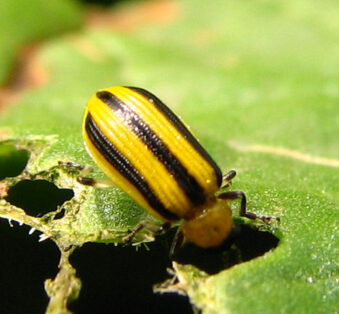
Symptoms of a cucumber beetle attack
If you observe a lodging (a plant that lies on the ground) of plants, the latter are, without a doubt, victims of a cucumber beetle attack. This is common in herbaceous plants such as St. John’s wort or cucumber. Similarly, if you see that the leaves of your plants are more or less nibbled, they may be victims of an attack by laceworm larvae.
Life cycle of the cucumber beetle
The life of the cucumber beetle takes place in 4 stages:
- The “egg” stage: during the cold season, the cucumber beetle remains buried in the ground (at a maximum depth of 7 inches); around March-April, the egg hatches and gives a larva.
- The larval stage: after hatching in the soil, the beetle larva will climb up the plant to feed on its leaves.
- Pupation: once fed, the cucumber beetle larva will drop to the ground and hide to pupate (synonymous with pupation, transformation of the larva into a pupa, stage preceding the adult stage). This usually takes place in June.
- The adult stage: three weeks to a month later, the pupa turns into an adult cucumber beetle. The latter will emerge from the ground to reproduce. Female beetles will lay close to 500 eggs (in groups of 5 to 8 at each laying) under the leaves of the plant on which they are found or in the soil depending on the species of beetles considered.
Summary:
Chrysomela is a generic term for a large family of insects of the order Coleoptera, which includes the Cucumber beetle. The Chrysomela family consists of 19 subfamilies and 37,000 species.
The cucumber beetle is a very small insect: it rarely measures more than half an inch as an adult. In addition, it attacks all types of plants. Here we focus on cucumbers. We propose you 3 plants to push back them: the chrysanthemum, the tansy and the wormwood.
